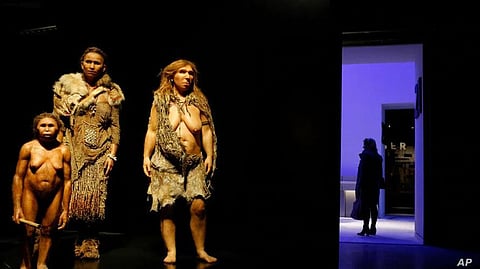Researchers have confirmed that hundreds of thousands of years ago, Neanderthals mated with at least four other contemporary species of ancient humans, or hominids, and the evidence lives on in the genes of modern men and women.
A study published Thursday in the science journal PLOS Genetics shows how researchers from Cornell University analyzed the genomes, the complete genetic "map," from Neanderthals, a prehistoric human ancestor called Denisovans, and modern humans.
Follow NewsGram on Twitter to stay updated about the World news.
Analysis of the genomes revealed new evidence of gene flow between these species, bolstering earlier theories that the species intermated. The researchers found 3% of the Neanderthal genome came from interbreeding with other ancient humans that lived at the same time.
The new study estimates this intermixing happened between 200,000 and 300,000 years ago — far earlier than previous estimates indicated.
Want to read more in Hindi? Checkout: एक ऐसा ग्रेनेड जो महिलाओं को मुसीबत से बचाएगा
The researchers also found that 1% of the Denisovan genome contained genetic material that came from an "archaic human ancestor" that was neither human, nor Neanderthal, nor Denisovan. They suggested it came from Homo erectus, an early human ancestor believed to be the first to spread to what is now Eastern Europe and parts of Asia.


